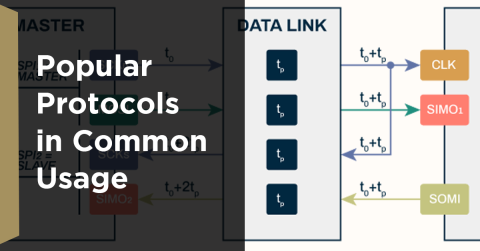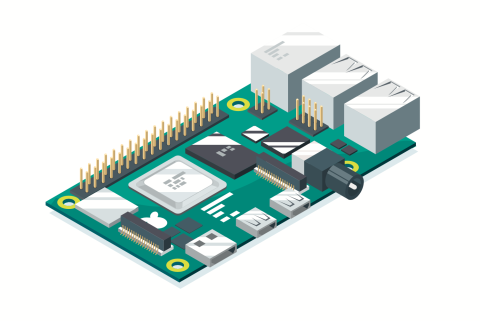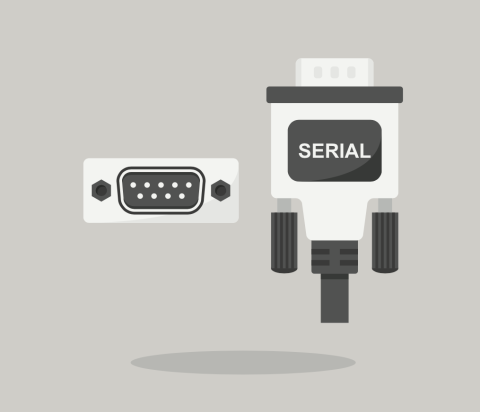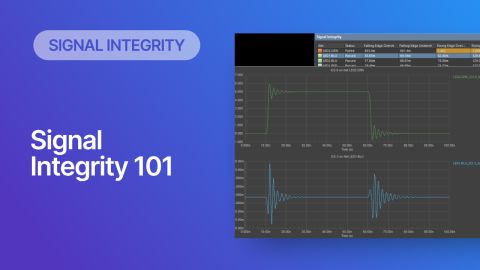Differential Pairs Without a Ground Plane: Is it a Problem?

Differential pairs have helped solve some basic signal integrity problems, and modern CAD tools make them easy to design and route. However, differential pairs are not the cure-all for every signal integrity problem, despite their usefulness in suppressing common-mode noise at a low-level receiver. There is one question that always gets asked when discussing differential pair routing: do these traces need a ground plane?
Sometimes, the answer to this question depends on who you ask and which conceptual example you use to explain how differential pairs work. Like most engineering questions that we encounter on this and other blogs, there are kernels of truth to all the answers you’ll find to this question, and it’s easy to take those points out of context. Let’s look at when you need to use a differential pair ground plane, and when it’s merely a bad idea to route differential pairs without ground.
What is a Differential Pair Ground Plane Anyways?
If you want to know when it’s appropriate to route differential pairs without ground, it pays to know what a ground plane does and why it’s important. First, let’s look at what a ground plane does physically (beyond just being a big copper conductor):
- Capacitance: When paired up with a power plane on an adjacent layer, you’ve just created a physically large capacitor. When the two planes are close together (thin laminate between planes), you have larger interplane capacitance.
- Shielding: A ground plane provide a nice big source/sink of charge. How charge is drawn from or sunk into a ground plane is basically irrelevant. In addition, it provides image charge to terminate electrical fields pointing into the plane.
- Single reference point: Ideally, it provides a reference potential. In other words, it can be used to provide a reference point for any voltage measurement, including the voltage “measurements” used by ICs to register logic levels. The 3.3 V signal you measure at the driving end of a lossless interconnect is reasonably assured to be seen as 3.3 V at the receiving end.
Aside from some other features like providing a simple way to distribute heat and power throughout a board, ground planes provide some basic electrical functions that sometimes aren’t discussed until you get to a graduate level electromagnetism class. In any case, the last two points matter for differential pairs without ground. If you get your routing right, you might not need ground for differential pairs.
Your Differential Pairs, Ground Planes, and Signal Levels
The way in which a differential pair relies on a ground plane depends on a few factors and relates back to the parasitics that govern impedance. First, let’s look at the parasitics between differential pairs. All differential pairs have some small amount of parasitic capacitance between them, which combines with their parasitic inductance and the native parasitic capacitance with respect to the ground planes.
These parasitics produce two effects:
- The parasitic mutual capacitance and mutual inductance provide coupling between the two lines in the pair, which helps determine their differential impedance.
- The parasitic capacitance back to the reference planes allows a displacement current to propagate in the ground plane.
Together, the parasitics determine the differential impedance of the pair, and the single-ended (odd-mode impedance) of an individual trace in the pair.
If there is a return current beneath traces in a differential pair (assuming we are speaking in the same way as we would for single-ended traces), it lies very close beneath the pair and aproaches zero at the midpoint between the pair. For high speed signals, one might expect the distribution of any return current below the trace to be approximately Gaussian. This is shown in the graph in the image below.

Here, to provide a “return path,” we don’t really need a ground plane. Imagine if we slowly increased the distance between the ground plane and the traces in the above figure. All electric field lines emanating from the positive trace would terminate at the negative trace. This explains the definition of differential impedance: it is the impedance between the two traces due to their mutual coupling. This also helps explain why signal levels in a differential pair are read as the difference between the values on each trace.
This is where someone will ask: “How does the current flow from the positive trace into the negative trace? It must happen through the IC!” Oddly enough, Lee Ritchey claims to know of a textbook that shows this specific graphic on the cover. Rather than asking where current flows, I suggest engineers get away from this idea that current “flows” anywhere like water in a pipe.
When a wave is excited at one end of the trace, the electric field is excited by some free charge distribution on the conductor. The electric field from one conductor induces polarization in the opposite conductor, which is seen as a displacement current. As the wave propagates down a differential pair, so does this charge imbalance along the two pairs. The rate at which this charge imbalance moves along the trace is indeed a return current. Note there is also a contribution from mutual inductance, and the same explanation applies.
Why Use a Ground Plane for Differential Pairs?
One point that everyone brings up with single-ended traces but forgets with differential traces is the level of isolation provided by a ground plane. Simply put, a ground plane near the differential pairs distorts the field lines and terminates them at the plane’s surface. If you have differential pair routing on two adjacent layers, you can isolate the pairs by simply putting a ground plane between the layers.
This leads to another reason to use a ground plane: suppressing differential crosstalk. The field lines shown below illustrate why differential pairs can induce crosstalk in a different trace, including in another differential pair. One either side of the trace. If you read the article I linked above, you’ll see that larger distances between a differential pair and its ground plane will increase the level of crosstalk induced in another trace (whether single-ended or differential).
This is due to the fields surrounding each trace in a differential pair, as shown in the image below. Here, the field is non-zero at the edges of a pair, meaning it can induce common-mode or differential noise in another trace. In addition to isolation between layers, using a ground plane also provides additional isolation between a differential pair and any other traces on the same layer. This might allow you to route traces closer together.

Lack of Ground and the Ground Offset Problem
Note that, if you plan to use differential pairs without ground while preventing other EMI problems, you need to apply length matching so that the signals on a differential pair arrive at the receiver within their timing budget. This is because, when unmatched signals arrive at the receiver, their difference is measured, but any mismatch can reduce the common-mode reduction capability of the receiver. In terms of the return current in any nearby reference, this would technically produce a momentary current burst in the nearest capacitively coupled ground region. If the ground region is far from the pairs (i.e., a far-away plane or the chassis), then you’ve your short electromagnetic burst can radiate, effectively as its own common-mode noise source. However, in a practical sense, this radiation is not such a worry except maybe in densely-packed PCBs, in which case you should be applying more space between crosstalk-prone components anyways.
The major advantage to using differential pairs is the immunity to ground offset. Differential pairs are generally immune to ground offsets and do not require the grounds on each side of a differential link to be bridge, e.g., with a shielded cable. Ground offsets are only a problem in single-ended signaling as a ground offset will modify the signal level in the board. This can be illustrated schematically on a PCB with separate ground planes, or for a long cable routed between two enclosed systems as shown below.

Because a differential pair relies on measuring the difference between the signals on each side of the pair, the ground offset does not matter in this link. While this might not be such a problem on a PCB with a uniform ground plane, it is a real problem on long electrical links being used to join distant equipment.
Depending on how termination is implemented and the impedance deviations between each side of the pair, the real method for ground offset compensation is implemented with a current source at one end of the link (this is built into the receiver). With on-die termination implemented in modern differential receiver and transmitter components, you don't really need to worry about this. Your job as a designer is to ensure that you hit the required impedance targets and minimize skew below allowable limits for your particular interface.
Ground Without a Ground Plane
There are other situations where a ground plane may be absent (or far from the differential pair), but there is still ground in the design. Specifically, we have the following:
- Differential pairs with coplanar ground on a thick substrate, such as a 2-layer PCB or a single-layer PCB
- Fine-line routing with very small spacing (~2 mil or less), which you would find in HDI or UHDI PCBs
- Differential pairs routed with a ground trace nearby (essentially a guard trace)
Each of these approaches has appropriate uses and risks involved as there is essentially sparse ground in each case. The table below summarizes each situation.
|
Approach |
When to use |
Biggest risks |
|
Ground trace near differential pair |
Low-frequency differential pairs (e.g., audio) |
|
|
Coplanar ground near differential traces |
Moderate speed differential pairs |
|
|
2-layer PCB, solid ground a no coplanar ground |
Moderate speed differential pairs |
|
| Very low spacing between differential traces, no ground | Ultra-HDI at moderate speeds only |
|
The first case is something I have never used because it is reserved for very low speed differential interfaces. Another area where it could be used is in audio, where you are routing very low frequency analog signals. Finally, there are applications in sensing where differential measurements are involved, and as long as there are mechanisms to deal with any noise or EMI, the first approach may be acceptable.
In production-grade boards, we at least take the 2nd approach, particularly on 2-layer PCBs. This is highly preferrable to the 3rd approach because at least the 2nd approach can have balanced copper. If you calculate the differential impedance on a 2-layer PCB with Dk = 4.5 and compare that with the case of the same PCB stackup but with coplanar ground around the differential pairs, you would get the following values:
|
Design |
Trace width @ 100 Ohm impedance |
|
S = 5 mil, 62 mil thick dielectric, no coplanar ground |
11.33 mil |
|
S = 5 mil, 62 mil thick dielectric, coplanar ground with 5 mil spacing |
6.732 mil |
The effect of the coplanar ground in this case is simple to understand: it adds parasitic capacitance which decreases the odd-mode impedance of each trace. We compensate for this by decreasing the trace width while maintaining the same trace-to-coplanar ground spacing.
Finally, in the HDI/UHDI approach, you have a new challenge due to the losses from narrow copper traces. There is also a problem with density, which can incur a crosstalk penalty (unexpectedly higher crosstalk) from packing so many traces into a smaller space. The fastest way to overcome the density problem is to change the PCB laminate material and its thickness.
What Determines the Impedance If There's No Ground Anywhere?
For a single trace, the characteristic impedance depends on the trace width-to-dielectric thickness ratio. If you have a microstrip, and increase the distance to ground to a very large value, the characteristic impedance of the trace will grow logarithmically to very large values. So, how does the impedance of a differential pair stay at a fixed value if there is no ground plane and the characteristic impedance of each trace gets very large?
- The answer lies in the spacing between the traces in the pair. The differential impedance target, as well as the single-ended impedance of each trace, is maintained by keeping the spacing between the two traces constant. This sets the single-ended impedance AND differential impedance to the target value, even if there is no ground plane!
For a given spacing, the single-ended impedance of each trace will be set to the odd-mode impedance due to the coupling between the two traces. The trace impedance that affects signal propagation on each trace in the pair is the odd-mode impedance, not the characteristic impedance. This should explain the role of cables that carry differential signals; the coupling between them keeps the individual wire impedance set to the required odd-mode value, not the presence of any nearby ground plane (this is totally arbitrary in unshielded cables with no ground conductor).
If you route over a ground gap and then back over a ground plane, what will happen? Depending on the size of the gap and the distance to the plane, you may see an impedance discontinuity. You need to make sure the trace impedances are matched in each section, and that the input impedance is invisible to prevent reflections. Make sure to account for this in your impedance and stackup calculator.
Modern PCB design programs like Altium give you a complete set of routing tools for high speed impedance-controlled designs, making differential pairs without ground an easy feature to route in your PCB layout. Altium delivers an unprecedented amount of integration to the electronics industry until now relegated to the world of software development, allowing designers to work from home and reach unprecedented levels of efficiency.











